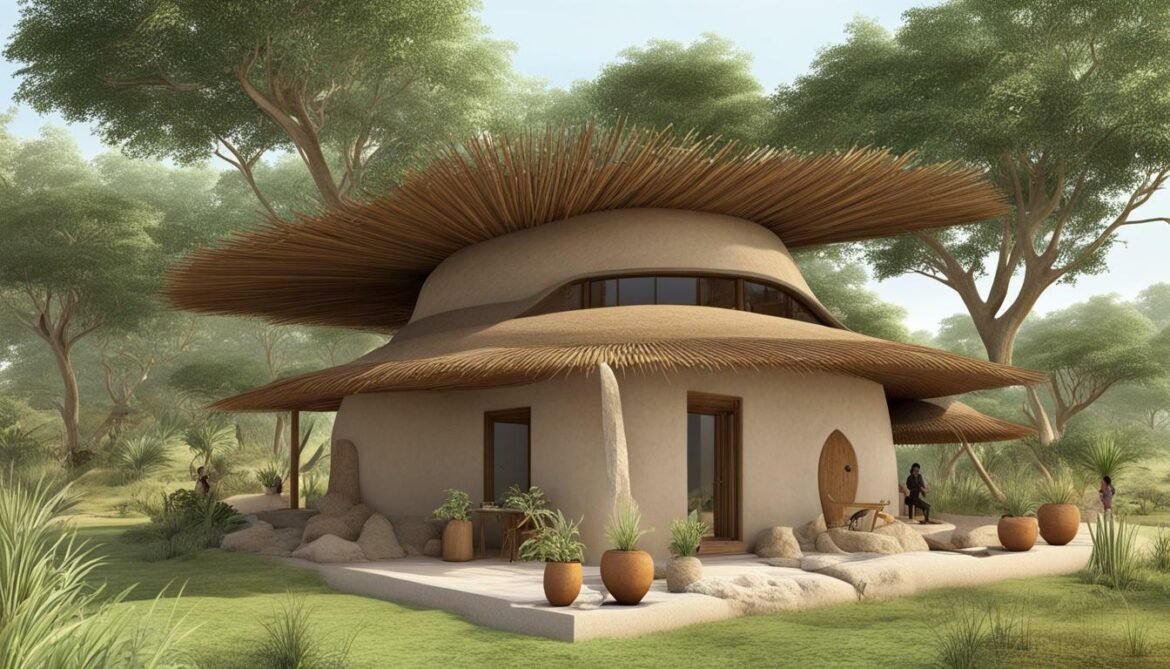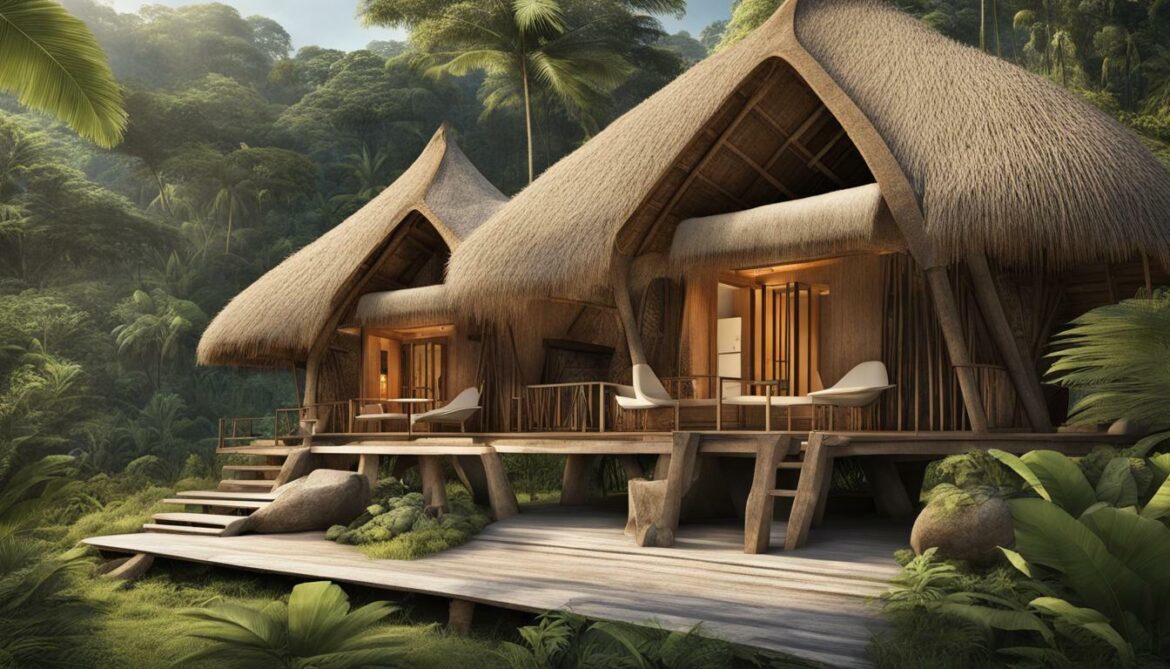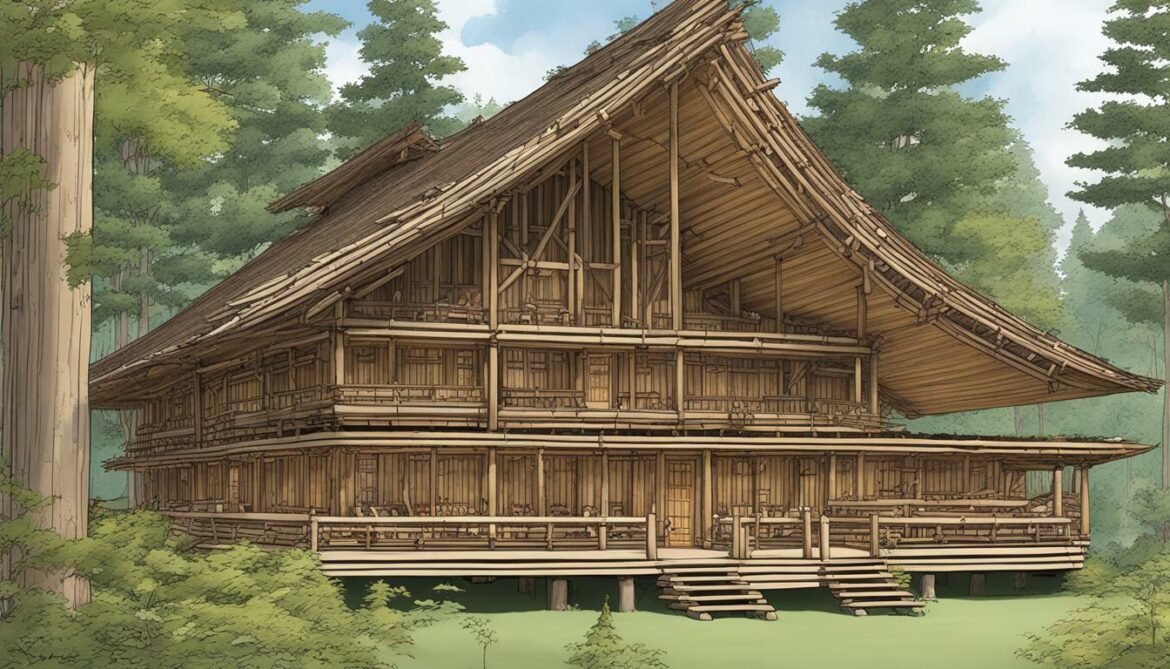Indigenous architecture is a unique form of design that is deeply rooted in local contexts and cultural heritage. It is a reflection of the history and traditions of a community, as well as the natural environment in which they live. From Africa to Asia, the Americas to Australia, indigenous architecture has evolved over centuries to meet the needs of the people who inhabit these regions.
The use of traditional building methods, local materials, and vernacular architecture are key features of indigenous architecture. Contextual design through community engagement plays a significant role in shaping architectural designs that truly reflect and respond to the unique cultural and environmental context of the community.
Indigenous architecture provides an insight into the history, culture, and identity of a community. These structures serve as a reminder of the ancestral wisdom of indigenous people and their deep connection to the land.
Key Takeaways
- Indigenous architecture reflects local contexts and cultural heritage.
- Traditional building methods and sustainable design practices are essential features of this architecture.
- Community engagement is central to the contextual design of indigenous architecture.
- Local materials and vernacular architecture are significant in shaping indigenous architecture.
- Indigenous architecture plays a vital role in preserving cultural heritage and identity.
Traditional Building Methods and Sustainable Architecture
Indigenous architecture has long relied on traditional building methods that utilize local materials, contributing to sustainable design practices that are in harmony with the environment.
The use of traditional methods such as adobe, thatch, and rammed earth construction not only ensures that buildings integrate seamlessly into the natural environment, but also promotes the use of locally-sourced materials that can be easily replenished, reducing the environmental impact. These methods have been used for centuries and have proven to be effective in creating resilient buildings that can withstand different weather conditions.
One example of sustainable indigenous architecture is the earthship, a self-sustaining building constructed using discarded materials such as tires, bottles, and cans, and utilizing natural elements such as sunlight and rainwater to provide heating, cooling, and water supply.
By incorporating traditional building methods and utilizing local materials, architects can create sustainable designs that not only have a positive impact on the environment but also promote cultural heritage and local identity.

“Indigenous architecture has long relied on traditional building methods that utilize local materials, contributing to sustainable design practices that are in harmony with the environment.”
Contextual Design and Community Engagement
Indigenous architecture is not just about the physical structure, it is also about the process of designing and creating these spaces. Contextual design is a fundamental aspect of indigenous architecture, and it involves working closely with the community to understand their values, needs, and aspirations. Community engagement is essential throughout the entire design process, from conception to construction.
Architects must actively involve the local community in the design process to ensure that the final product reflects their values and needs. This approach is in stark contrast to the Western model, where architects often impose their ideas on the community without considering their input. By working collaboratively, indigenous architecture honours the community’s cultural heritage and strengthens their identity.
Contextual design is not just about asking the community what they want; it is about considering the broader context. Architects must understand the cultural significance of the site and the local environment, including the climate and available materials. This process ensures that the design is both culturally appropriate and sustainable.
Community engagement does not end once the design is complete. Architects must also involve the community in the construction process, providing opportunities for them to contribute their skills and knowledge. This approach not only strengthens community ties but also ensures that the structures are built to last, using local materials and techniques.

Contextual design and community engagement are critical components of indigenous architecture, emphasising the importance of listening to the community and harnessing their knowledge and skills. By working collaboratively, architects can create designs that not only reflect the local context but also strengthen the community’s sense of identity and connection to their land.
Local Materials and Vernacular Architecture
One of the defining characteristics of indigenous architecture is the use of locally sourced materials. These may include mud, thatch, and wood, among others. The choice of materials is often influenced by the local context, climate, and cultural significance. By using materials that are readily available, indigenous architects are able to create structures that are sustainable and blend seamlessly with their surroundings.
However, the use of local materials goes beyond practicality. It is also a way to celebrate and preserve the cultural heritage of a community. Indigenous architecture often features distinctive designs that reflect the values, traditions, and stories of the people who use them. Through this approach, vernacular architecture is created; a style of architecture that is unique to a particular region and speaks to its cultural identity.
An excellent example of vernacular architecture is the traditional houses of the Ainu people of Japan. These structures are made using locally sourced materials such as straw, bamboo, and timber. The homes are designed to be sturdy, with thatched roofs that can withstand heavy snowfall. The Ainu people have lived in harmony with their environment for centuries, and their homes reflect this relationship.

The use of local materials and vernacular architecture not only contributes to sustainable design practices, but it also helps to strengthen the connection between a community and its land. By using materials that are indigenous to the area, architects are able to create designs that are rooted in the local context. This approach ensures that the structures they create are not only functional, but they also reflect the cultural heritage and identity of the people who use them.
Cultural Heritage and Identity in Indigenous Architecture
Indigenous architecture plays a vital role in preserving cultural heritage and reinforcing identities. Architectural designs not only serve as functional structures but also reflect the stories, traditions, and values of the community.
The practice of indigenous architecture involves using local materials, techniques, and designs that are rooted in the culture and history of the region. These designs are more than just buildings; they are a representation of the community and their way of life.
For example, the Wanuskewin Heritage Park in Canada is a site that embodies the significance of indigenous architecture in preserving cultural heritage. The park features a series of interpretive buildings that showcase the history and culture of the Northern Plains Indigenous Peoples. The designs of these buildings reflect the traditional teepees used by these communities. The structures serve as a reminder of the history and struggles of the indigenous people and celebrate their resilience and survival.

Indigenous architecture also reinforces the identity and connection to the land. The design of the structures is influenced by the local context, including climate, geography, and cultural significance. This results in structures that are in harmony with the environment and the local community, creating a sense of place and belonging.
The Navajo Hogan is one such example of a structure that reflects the identity and connection to the land. The Hogan is a traditional Navajo dwelling that is made of logs, mud, and earth. The design of the structure is based on the belief that humans and nature are interconnected. The entrance of the Hogan faces east, towards the rising sun, and it is considered a sacred space that connects the Navajo people to their ancestors and land.
In conclusion, indigenous architecture serves not only as functional structures but also as a reflection of cultural heritage and identity. The designs of these structures are in harmony with the local context, creating a sense of place and belonging. It is vital that we continue to appreciate and preserve indigenous architectural heritage for future generations to come.
Examples of Indigenous Architecture Around the World
Indigenous architecture is a rich and diverse field that reflects the unique local contexts and cultural heritage of different regions around the world. Let’s explore some compelling examples of indigenous architecture.
Maori Meeting Houses, New Zealand

The Maori Meeting Houses, or whare whakairo, are an impressive example of indigenous architecture in New Zealand. These houses are often located at the heart of Maori communities and are used for important ceremonies and gatherings. The intricate carvings and decorations on the houses reflect the history, traditions, and beliefs of the Maori people, making them a vital part of their cultural identity.
Yurt, Central Asia
The yurt, a portable shelter used by nomadic tribes in Central Asia, is a remarkable example of indigenous architecture. These circular tents are designed for easy assembly and disassembly, making them ideal for a mobile lifestyle. They are made using local materials such as wool and felt, which provide excellent insulation against the harsh winters in the region.
Longhouses, North America
The longhouse is a traditional dwelling used by many Native American tribes, particularly those living in the eastern woodlands. These houses are made of wood, bark, and other natural materials, and can be up to 100 feet long. They were typically used as multi-family dwellings, and served as a center for community life, reflecting the importance of communal living in Native American culture.
Stilt Houses, Southeast Asia
Stilt houses are a common type of indigenous architecture found in Southeast Asia. These houses are built on stilts or pilings to protect them from flooding and pests. The raised design also allows for better ventilation and provides cooler living conditions in the hot, humid climate of the region. The materials used to build stilt houses vary depending on the local context, but are often sourced locally and sustainably.
Adobes, South America
Adobes are a type of indigenous architecture found in South America, particularly in countries such as Peru and Bolivia. These houses are made of adobe bricks, which are created by mixing clay, water, and organic materials such as straw or manure. They are an excellent example of vernacular architecture, as they make use of local materials and techniques to create homes that are well-adapted to the local climate and culture.
These are just a few examples of the diverse and fascinating world of indigenous architecture. Each design reflects the unique local context and cultural heritage of the region, demonstrating the importance of place-based design and community engagement in architecture.
Conclusion
Indigenous architecture is a prime example of how place-based design can reflect local contexts and cultural heritage. Through the use of traditional building methods, local materials, and vernacular architecture, indigenous architects create sustainable structures that blend seamlessly with the environment.
Moreover, community engagement and contextual design are essential elements of indigenous architecture, highlighting the importance of involving local communities in the design process. By doing so, architects can create designs that reflect the values, needs, and aspirations of the community.
Cultural heritage and identity are also crucial aspects of indigenous architecture, as it plays a vital role in preserving and embracing the stories, traditions, and values of a community. Designs that reflect cultural heritage and identity provide a sense of unity and belonging, reinforcing the community’s connection to their land.
Appreciating Indigenous Architecture
Indigenous architecture is a diverse and rich tradition that varies across different regions around the world. From the igloos of the Inuit people in the Arctic to the adobe houses of the Pueblo people in the southwestern United States, each design reflects the unique local context.
The importance of indigenous architecture must not be underestimated. It serves as a reminder of the profound connections between people, culture, and the environment. By appreciating and celebrating indigenous architectural heritage, we can gain a deeper understanding of the world around us.
Ultimately, the principles of indigenous architecture – local contexts, traditional methods, vernacular architecture, community engagement, and cultural heritage – should inspire contemporary architecture. Embracing these principles can lead to the creation of sustainable, ecologically respectful, and culturally meaningful designs.
FAQ
FAQ
Q: What is place-based design in indigenous architecture?
A: Place-based design in indigenous architecture refers to the practice of creating architectural designs that are deeply rooted in the local context and cultural heritage of a particular community. It involves incorporating elements such as local materials, traditional building methods, and community engagement to create structures that reflect the values, needs, and aspirations of the indigenous people.
Q: How do traditional building methods contribute to sustainable architecture in indigenous design?
A: Traditional building methods in indigenous architecture often prioritize sustainable design practices. By utilizing local materials and techniques that have been passed down through generations, indigenous architects are able to create environmentally friendly structures that blend harmoniously with the natural surroundings. This approach minimizes the ecological impact and promotes a more sustainable built environment.
Q: What is the role of contextual design and community engagement in indigenous architecture?
A: Contextual design is a key aspect of indigenous architecture, which involves understanding and responding to the specific needs and aspirations of the local community. Indigenous architects work closely with the community throughout the design process, ensuring that the final result reflects their cultural values, traditions, and identity. This approach fosters a sense of ownership and empowerment within the community and creates designs that are truly meaningful and relevant.
Q: How are local materials used in vernacular architecture within indigenous communities?
A: Local materials play a significant role in vernacular architecture within indigenous communities. Architects and builders use materials that are readily available in the local environment, such as wood, stone, earth, or thatch. These materials are often chosen for their suitability in the local climate and their cultural significance, ensuring that the architecture reflects the unique characteristics of the region and the community’s connection to the land.
Q: How does indigenous architecture preserve cultural heritage and identity?
A: Indigenous architecture serves as a powerful tool for preserving cultural heritage and identity. By incorporating traditional design elements, storytelling, and symbolism, architectural designs can reflect and celebrate the cultural traditions, values, and stories of a community. Indigenous architecture strengthens the connection between people and their land, enhancing a sense of identity and cultural pride within the community.
Q: Can you provide examples of indigenous architecture from around the world?
A: Certainly! Indigenous architecture can be found in various regions around the world. Some notable examples include the stilt houses of the Batak people in Indonesia, the adobe structures of the Pueblo tribes in the southwestern United States, and the communal longhouses of the Iban people in Borneo, Malaysia. Each design showcases the distinct local context and cultural heritage of the indigenous communities.























Post comments (0)